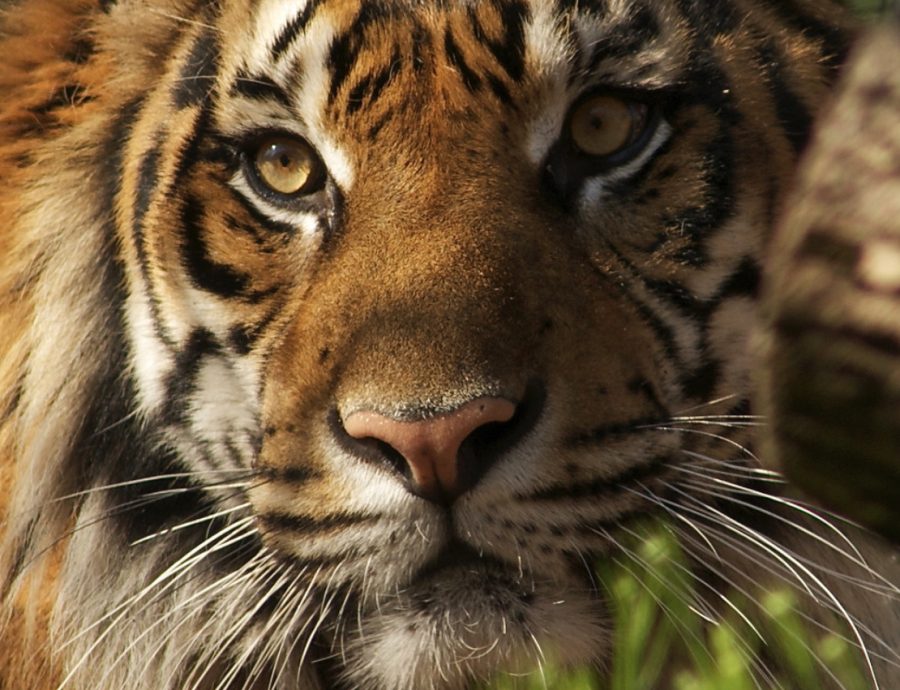Tenafly’s Mascot on the Verge of Extinction
March 10, 2023
The year is 2070. The Tenafly Tigers take the field at their first football game of the season. They are excited to kick off the first game, but the opposing team wonders about their peculiar mascot: “What’s a tiger? Isn’t that the old animal that went extinct?” they ask.
Although this scenario seems improbable, it is our unfortunate and inevitable reality. According to Save Animals Facing Extinction, in the last 80 years, three out of the nine species of tigers have gone completely extinct. There are as few as 3,200 in the remaining six species, which accounts for the remaining 3% of the population. According to Endangered Species International, by 2030, tigers are predicted to only be found in zoos, and by 2070, they are predicted to be completely wiped off the planet. The endangerment has been overshadowed by many topics dominating the news, and, of course, the coronavirus was no help, but a combination of poaching, habitat loss, climate change, and negative human-wildlife encounters have caused serious damage to the tiger population.
That’s the why, but how is this going on? According to Bio Explorer, the growth of industrial development and urbanization is forcing tigers into living in unnatural habitats where their prey is limited significantly. The lack of prey results in a lack of tigers as they are forced to relocate. In their relocation, the tigers have hopes of finding prey, but unfortunately, they come in contact with humans on farms and are killed out of fear of them damaging crops or livestock. In some places in India, villagers poison tigers in retaliation for eating their cattle. Furthermore, climate change is limiting tigers’ habitat options. The rising temperatures, humidity, and human density have forced many tigers out of their homeland. As explained on Bio Explorer, ”Scientists think that some habitats like the Russian Far East can no longer accommodate tigers. Because of these, the population of Siberian tigers can be completely wiped out within a few decades.”
The immediate and most deadly threat to tigers is poaching. According to Poaching Facts, China has used tigers for traditional Chinese medicine. Rooting hundreds of years back, tigers are believed to contain supernatural powers, which results in poaching them to obtain profit. Indeed, tiger parts have been sold for thousands of dollars. Thirty percent of the tigers that died in 2021 were killed by poachers. The rest remain in the 13 countries that still have tigers, called “Tiger Nations.” The countries are currently engaging in discussions of ways in which to help with the crisis with one goal being to reintroduce tigers to previous home countries.
Without having to travel across the globe, what are things we can do right here in Tenafly? For starters, we could spread the news itself. Many Tenafly students were shocked when asked to share their thoughts on the situation. “Honestly, I had no idea that the extinction of tigers was even a possibility, so I think that if it is broadcasted more, we can spread awareness to it,” said student Blake Rubach (’24). Like Blake, many Americans are still in the dark about this situation. This is a topic that is completely off of the radar for most individuals.
“When was the last time you heard about tigers in the news? Raising awareness and using the news will hopefully help the cause to reduce human impact on tigers,” THS biology teacher Mr. Gagliardotto said.
For Tenafly, the tiger is a symbol of the overall ideal student. The cafeteria even has a poster that sums it all up. It reads:
T- Thoughtful
I- Involved
G- Grateful
E- Engaged
R- Responsible
S- Serving
What will the tiger be known as for future students? “Tigers would seem like a mythical creature or something of the distant past if they were to go extinct in this generation, like the Tasmanian devil or the dodo bird. They might only know them as our school mascot or even as just a cereal mascot, which would not be great. I hope that we can put effort into turning around their decline like we did with the bald eagle,” said Mr. Gagliardotto.
A tiger never changes its stripes, and we can’t let them lose them either! Spread the word and help support tiger extinction here.

















































































































































